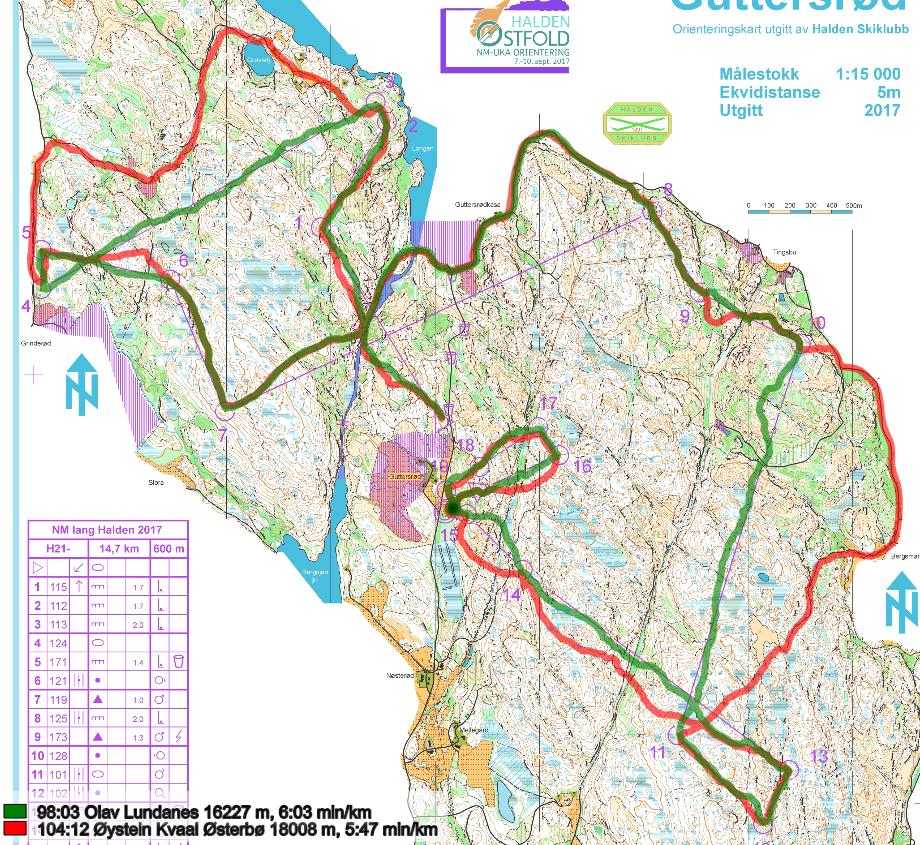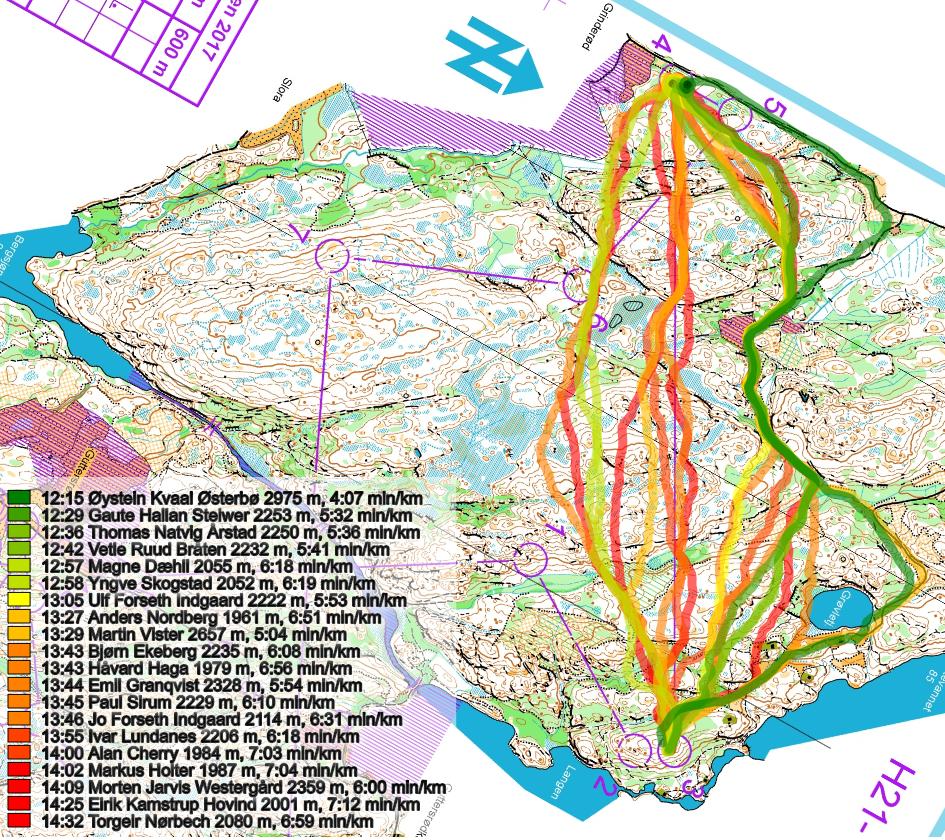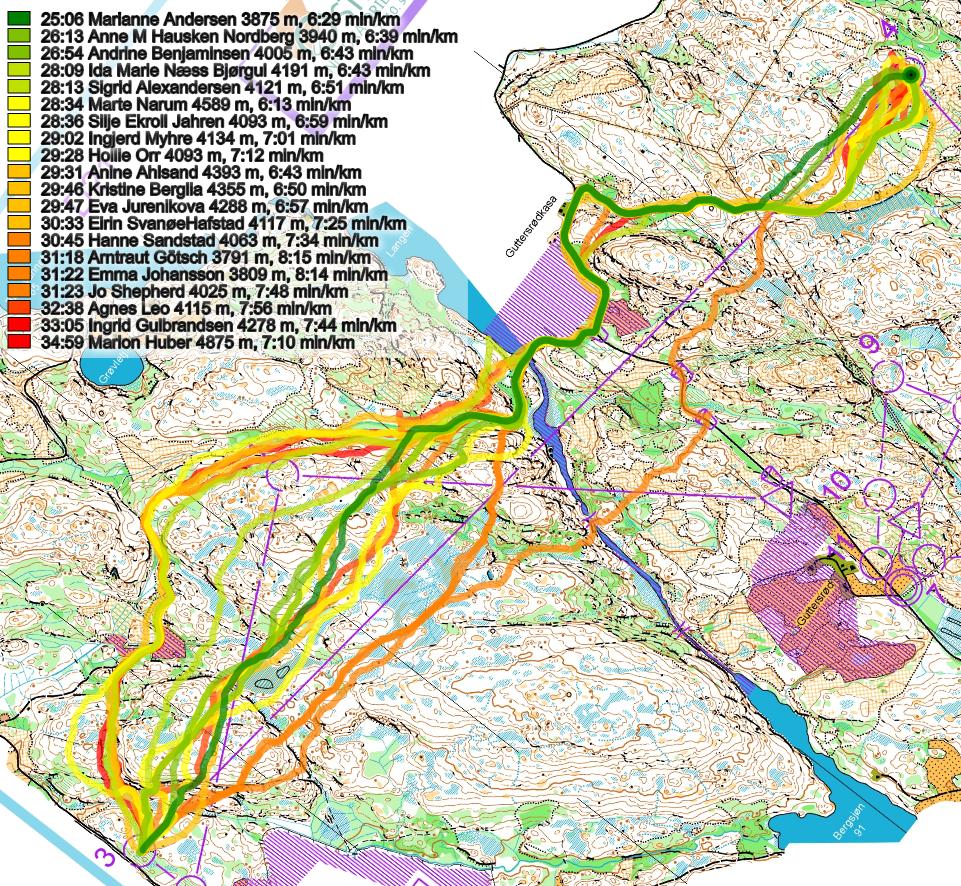In the second edition of WOC2019's GPS Analysis Column World of O's Jan Kocbach takes a look at the GPS-tracking from the Norwegian Championships Long distance, organized September 7th 2017 in the neighbour terrain of the 2018 pre WOC and World Cup races. A must read for those interested in WOC 2019 terrain.
In the first edition we took a look at Euromeeting Long distance, and here the main takeaway-point was that on this particular course you did not lose much time when keeping close to the line, the fastest route never being more than 75 meter away from the direct line except for a single leg. Today's main question is therefore: How often can you get away with following the straight line in the pre WOC neighbour terrain?
Additional info: You find the GPS-tracking from NM long here: men / women. Note that this coming weekend you can follow live GPS-tracking and webTV in WOC 2019 relevant terrain from Blodslitet - tune in here on Saturday for all the excitement LIVE.
Straight as a bulldozer
The quick answer: If you are Olav Lundanes, you can mostly get away with fighting straight as a bulldozer through the tough Østfold terrain. If you are somebody else, you can earn some time by going around the toughest parts and using your speed. Even Lundanes could have earned some time by taking a longer option in some cases, although he seldom lost many seconds with his straight routes.

Illustration: A typical situation on leg 10 - 11. Lundanes runs straight, and loses 1 second to the best split time of Gaute Hallan Steiwer who runs nearly 700 meters longer to the left. 4:40 min/km versus 6:10 min/km. Lundanes might have been able to be faster on Hallan Steiwer's route here - he had a somewhat higher speed - but Lundanes knows that on this type of leg, he seldom loses time when going straight.
Choose your strategy
To illustrate the differences in strategy: Olav Lundanes, long distance specialist known for his strength in tough terrain took all the straight options and ran 16.2 kilometers on the 14.7 kilometer long course. Sprint specialist Øystein Kvaal Østerbø, fast on paths and roads, choose to run much around, and ran 18 kilometers. Lundanes was fastest in the end, but he is stronger than Kvaal Østerbø 99 of 100 times on this type of course in his current shape.

Men's leg 3-4
One leg of particular interest on this course was the first long leg in the men's course - the leg from control 3 to control 4.

Here Lundanes goes straight - extremely straight - with second fastest time. And if it were not for Øystein Kvaal Østerbø's 13 seconds faster time on a route around to the right, mostly on paths and roads, one would maybe have thought that straight was fastest here:

If we however take Lundanes out of the equation, it is however quite clear that there are not many who master running straight in this terrain as well as Lundanes does. This is all about knowing your strenghts and weaknesses. Would straight be best for you?

Women's leg 3-4
There were several other interesting legs on the men's course - we'll leave all the fun to the interested reader on the coming dark autumn evenings (head over to the GPS-tracking here). We do however include a leg from the women's course as well - the longest leg on the course from control 3 to control 4. This is the type of leg where you look at the leg for 5 seconds. 10 seconds. 15 seconds. 20 seconds. And still you can't see a good route which you really want to run. Then you just have to eliminate all the bad routes, and take the one that is left.

I am sure it did look tempting to take to the left and follow the big path as far as possible to avoid climb, but that flat transition between the paths is just as slow as it looks when looking carefully at the map. Instead, the fastest route is to quite straight (but slight left) on the first 2/3 of the leg until the road - especially for Marianne Andersen who wins this leg and has some of the same capabilities as Lundanes with respect to running straight in tough terrain. On the last 1/3 of the leg you should use the road to avoid the hill, but then Marianne Andersen again shows that straight is fast.

A quick note: If you want to go left, it would have been fastest for many to follow Kvaal Østerbø's way in opposite direction, going back out of the control and following the road. A few did it and gained time here compared to the rest of the course.
Summary
To summarize, you can still go straight in most cases if you are strong in tough terrain, but many, many of the WOC 2019 participants will benefit from looking out from the straight line and try to find the smart routes where you can keep the speed higher with lower risk for doing losing time on micro routechoices. Or you can simply learn to orienteer like Lundanes and go straight - the choice is yours, there is still time to learn ...


